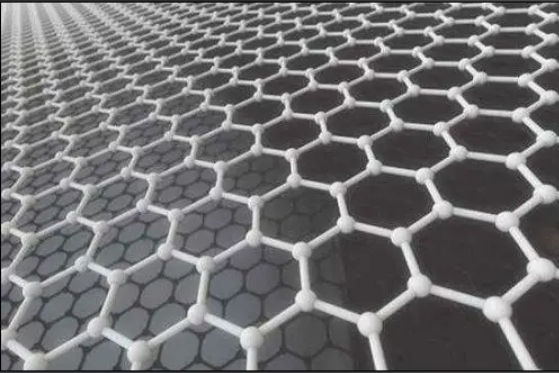Graphene in Energy Storage Supercapacitors: Fast, Efficient, and Durable
The global energy landscape is undergoing a rapid transformation, driven by renewable energy adoption, electric vehicles (EVs), and the increasing need for reliable energy storage. While traditional lithium-ion batteries dominate the market, there are situations where fast charging, high power density, and long cycle life are more important than maximum energy storage capacity. This is where supercapacitors come in.

Supercapacitors are known for their rapid charge and discharge cycles, high power delivery, and long durability, but they have traditionally struggled with limited energy density compared to batteries. With the integration of graphene, this limitation is being redefined. Thanks to its extraordinary electrical conductivity, high surface area, and mechanical stability, graphene is unlocking new performance levels in energy storage devices.
Why Graphene for Supercapacitors?
Graphene provides a combination of properties that make it ideal for supercapacitor electrodes:
-
High Surface Area: Single-layer graphene has a theoretical surface area of ~2630 m²/g, allowing more ions to interact during charge/discharge.
-
Superior Electrical Conductivity: Enables rapid electron transport, reducing resistance and improving efficiency.
-
Mechanical Flexibility: Maintains structural integrity over millions of charge/discharge cycles.
-
Electrochemical Stability: Operates effectively across wide voltage ranges and various electrolytes.
These advantages allow graphene-based supercapacitors to deliver both high energy density and high power density, bridging the gap between conventional capacitors and batteries.
Applications of Graphene Supercapacitors
1. Electric Vehicles (EVs) and Transportation
-
Graphene supercapacitors can deliver instant power for acceleration and quickly recharge during braking (regenerative braking).
-
They complement lithium-ion batteries by handling short bursts of high current, extending battery life.
-
Future EVs may integrate hybrid energy storage systems combining batteries with graphene supercapacitors.
2. Renewable Energy Integration
-
Solar and wind energy face intermittent generation challenges.
-
Graphene supercapacitors can store excess power during peak production and deliver it rapidly when demand spikes.
-
Their fast response makes them ideal for grid stabilization and frequency regulation.
3. Consumer Electronics
-
Smartphones, laptops, and wearables require fast-charging solutions.
-
Graphene supercapacitors enable devices to charge in seconds to minutes instead of hours.
-
Their long cycle life ensures sustainable electronics with reduced e-waste.
4. Aerospace and Aviation
-
Lightweight and durable, graphene supercapacitors are suited for drones, satellites, and aircraft.
-
They can power high-energy bursts for takeoff or rapid maneuvering.
-
Their resilience to extreme environments makes them attractive for space missions.
5. Smart Grids and IoT Devices
-
Graphene supercapacitors can power wireless sensors and IoT networks, requiring small but reliable energy bursts.
-
Their long durability ensures devices operate for decades with minimal maintenance.
Performance Comparison
| Parameter | Traditional Capacitors | Lithium-ion Batteries | Graphene Supercapacitors |
|---|---|---|---|
| Power Density | Very High | Moderate | Very High |
| Energy Density | Very Low | High | Moderate–High |
| Charge/Discharge Speed | Seconds | Hours | Seconds–Minutes |
| Cycle Life | Millions | ~1000–5000 | >1,000,000 |
| Sustainability | Moderate | Resource-intensive | High (carbon-based) |
Graphene supercapacitors combine the best of both worlds: fast power delivery and extended lifetimes, while steadily improving in energy density.
Recent Breakthroughs
-
Hybrid Graphene Electrodes – Researchers are developing graphene-oxide hybrid electrodes that store more ions, improving energy density without sacrificing speed.
-
Flexible Supercapacitors – Wearable graphene-based devices are being tested for medical sensors and flexible electronics.
-
Mass Production Advances – Companies are scaling up production of graphene supercapacitors for commercial EV and electronics applications.
Challenges and Future Outlook
Despite the promise, some challenges remain:
-
Cost of Graphene Production – Large-scale, low-cost, and high-quality graphene synthesis is still evolving.
-
Energy Density Gap – While graphene supercapacitors are improving, they still lag behind lithium-ion in energy per unit mass.
-
Integration with Existing Systems – Hybrid storage systems require smart energy management technologies.
Looking forward, continuous innovation in graphene material processing, electrode design, and hybrid energy systems is expected to bring graphene supercapacitors into mainstream markets within the next decade.
Graphene is reshaping the potential of supercapacitors, enabling devices that are fast, durable, lightweight, and eco-friendly. While batteries remain essential for bulk energy storage, graphene supercapacitors excel in high-power applications, making them a critical complement to future energy storage strategies.
As renewable energy adoption, electric vehicles, and portable electronics continue to expand, graphene supercapacitors are poised to play a key role in the global energy transition.

